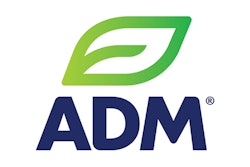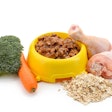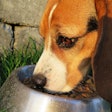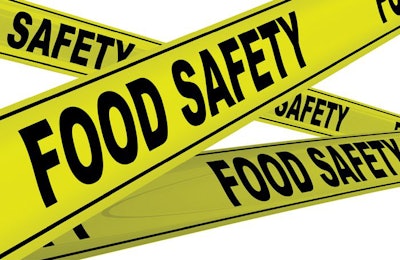
Food safety has always been top-of-mind for the pet food industry, and as trends grow to include premium and superpremium products in the raw, fresh and frozen categories, the plans in place to ensure a safe, viable product have grown as well.
In addition, the current (as of May 2020) COVID-19 pandemic has everyone — from ingredient suppliers and manufacturers to packaging and retailers — asking how they can guarantee the safety of every person and every product involved in the pet food industry.
HPP and its continuing place in raw pet food
High-pressure processing (HPP) is a non-thermal process that uses water and pressure to inactivate foodborne pathogens and spoilage organisms. In the pet food world HPP is used on raw pet food as a kill step.
“HPP provides safe food to companion animals and their owners, controlling spoilage microorganisms and achieving several log reductions of pathogens associated with raw foods such as E. coli, Salmonella or Listeria,” said Vinicio Serment, U.S. applications manager for Hiperbaric, an HPP equipment manufacturer. “This way, the cross-contamination risk of human foods and environments from raw pet food is also minimized.”
In spite of HPP’s efficacy, the process has had a rough time over the years in terms of acceptance.
“We started looking into HPP two years ago when it became necessary to have validated kill steps in order to adhere to the U.S. Food and Drug Administration (FDA)'s zero-tolerance policy,” said Nicole Lindsley, owner of Steve’s Real Food. “However, due to the negative perceptions that the pet food consumer and retailer had to the process, we needed to do extensive research before deciding to use it.”

Steve’s Real Food has been manufacturing raw frozen pet food for over 20 years and started looking at using HPP (their current process) two years ago. | Courtesy Steve’s Real Food
The company partnered with Hiperbaric to determine which route to take.
“We did testing on the nutritional makeup of pre- and post-HPP food along with testing on enzymes and probiotics,” said Lindsley. “After a year we found that there is not a significant degradation to the food. We started using it on our poultry products to test out the market's response to the change. We found that there was still a split in receptiveness to the process so we continued on with our research. After another year we discovered that not only would HPP allow us to mitigate the harmful microbial environment, but it would also allow us to preserve the food without chemicals and extended its shelf life.”
Scoular, which provides supply chain solutions for end-users and suppliers of grain, feed ingredients and food ingredients, is currently building a facility in Nebraska, USA, to accommodate its new freeze-dried pet food ingredient manufacturing subsidiary, Petsource. With food safety in mind from the very beginning, the plant has extensive plans to accommodate safe handling of raw ingredients both before and after they go through HPP, which the company is also employing.
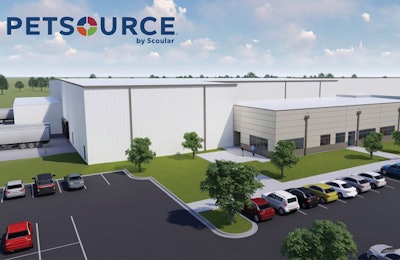
Petsource by Scoular’s new manufacturing facility, currently being build in Seward, Nebraska, USA, is on track to open in fall 2020 in spite of the current global pandemic. | Courtesy Scoular
“The plant has been built so we have separate areas for raw receiving, raw storage and raw processing,” said Jon Heussner, director of operations for Petsource. “We also have separate areas for post-raw (forming, extrusion, freeze-dry and packaging), from separate maintenance shops to separate breakrooms to employee flow. The plant is designed so each of those areas is very clearly defined and separated through our walls, our HVAC system, etc."
“We are using HPP, so we are putting our product into chubs and sending them to a third-party company,” he said. “Then we’re getting the product back and we’re forming it, dicing it, putting it through freezing and then preparing it for the freeze-dried process.” According to Heussner, the facility will have multiple areas where pathogen testing will be conducted, both prior to and after processing, in addition to testing that goes hand-in-hand with the expected environmental programs.
In general, those using HPP have decided it’s the safest route to take when dealing with raw pet food products.
“Prior to HPP we experimented with many other kill steps,” said Lindsley. “We tested acid sprays, biophages, test and hold, probiotic sprays and environmental controls. These were effective methods, but none of them could produce a 5-log reduction, which is what our goal was. After working with Hiperbaric, we were able to fine-tune our HPP process to achieve the 5-log reduction, complete a validation study and ensure the food was not nutritionally compromised.”
Sanitation: a hot topic amidst a pandemic
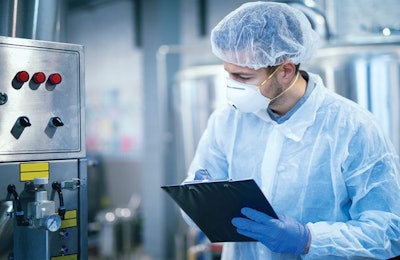
Sanitation questions have increased in the wake of the current COVID-19 pandemic, according to experts.| (Smederevac I iStockPhoto.com)
Sanitation is a particularly important touchpoint for any processing facility dealing with food, and pet food is no exception. Now, more than ever, in the midst of the COVID-19 pandemic, those involved have concerns about the safety of their people and their facilities.
“Our office has been getting a lot of calls relating to the novel coronavirus,” said Yujin Yoo Anderson, equipment sales executive for Steamericas, a supplier of commercial and industrial cleaning products specializing in vapor steam machines. “We made a dedicated website with many FAQs and also made a video for cleaning and disinfecting against COVID-19.”
According to Anderson, the top question they’ve been hearing is about whether the steam sanitation process can kill the new COVID-19.
“Validation specific to COVID-19 has not been done,” said Anderson. “However, we believe steam can deactivate —it's not ‘alive’ so ‘kill’ isn't the correct term — the novel coronavirus.”
Based on data Steamericas already has on the process (which shows steam’s efficacy in eradicating microorganisms), the World Health Organization (WHO)’s guidance on COVID-19 and its transmission via the water supply (current technologies are sufficient to inactivate the virus, but in places where centralized water treatment isn’t available, boiling water is effective in destroying viruses), and the Centers for Disease Control and Prevention (CDC)’s promotion of steam sterilization, the company feels confident in its abilities to ease customers’ minds.
“We have data on most discussed pathogens,” said Anderson. “And we are currently working with Mississippi State University to conduct validation on vibrio and norovirus as well as coming up with best protocols for conveyor belt cleaning with vapor steam.”
Fortunately for everyone involved, safety is already the name of the game in facilities, so while everyone is concerned for their people, they are mostly conducting business as usual in terms of sanitation.
“All the things that we’re doing to prevent pathogens and to make sure our new plant is the cleanest it can be, we would have taken care of that anyway,” said Heussner. “Obviously there’s more questioning involved in terms of where [employees] have visited, have they been in contact with anybody, that I know we’re going to be adding to our training, but we had all of those things in place prior to COVID-19.”
Keeping equipment clean in order to minimize potential hot spots for any pathogen to live should be a top priority, including a focus on the harder-to-reach crevices every machine has.
“A good niche-busting tactic is to walk through the processing area several days after the last wet sanitation activity, scanning equipment with your eyes and nose,” said Jennifer L. Johnson, Ph.D. and Jeff Lucas, M.Ag., pet food experts with Mérieux NutriSciences, which helps promote public health through analysis, consulting, auditing, training, contract research and sensory analysis services in a variety of industries. “You’re looking for nasty odors indicative of a growth niche and for water puddles under equipment indicating water is trapped inside. Disassemble the suspect equipment to the greatest possible extent, looking for deposits of wet product residue. Pay special attention to compound structures, as well as gaskets, drive shaft seals and sleeves.”
Once potential niche sites have been identified, according to Johnson and Lucas, thoroughly clean those equipment parts and housings and then use the information you now have to re-evaluate the cleaning procedure specific to that equipment.
Stay the course and think ahead
Even before the current pandemic took hold, pet food customers demanded a concentration on pet food safety.
“Quality control and safety are top of mind for not only our customers, but also the ADM pet nutrition experts who work in our facilities,” said Bill Schoenherr, director of pet food business for ADM Animal Nutrition, which provides a wide range of products for the animal nutrition market. “ADM strategically collaborates with customers to create solutions that meet the stringent expectations of today’s consumers while applying critical safety monitoring checks and balances throughout the development process.”
Now that COVID-19 is the world’s new reality, the stakes are simply higher for everyone — and the industry is responding.
“Given the unprecedented circumstances of 2020, ADM has taken proactive measures to create contingency plans that will allow us to maintain production levels to meet customer demand,” said Schoenherr. “We are taking the potential risks of the coronavirus very seriously and are committed to doing our part to keep our colleagues, their families and the communities where we operate safe.”
View our continuing coverage of the coronavirus/COVID-19 pandemic.



